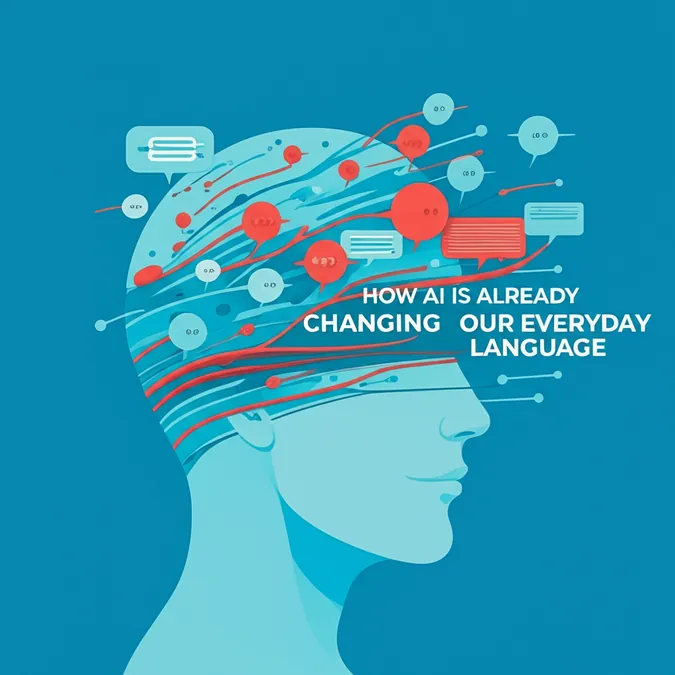Developer Offer
Try ImaginePro API with 50 Free Credits
Build and ship AI-powered visuals with Midjourney, Flux, and more — free credits refresh every month.
Talking to GPT 5s New Voice Feels Eerily Human
It was early in the morning at the auto body shop when I had the awkward realization that I'd forgotten my headphones. This normally wouldn't be a problem, but I was in the middle of a conversation with my phone—specifically, with ChatGPT. The feeling was as cringey as shouting a question at Siri across a quiet room or joining a work call without earbuds in an open office.
I was trying out the advanced voice mode that launched with GPT-5, the latest AI model from OpenAI. After months of anticipation, GPT-5 arrived this summer with promises of a faster and more intelligent experience, though user opinions are still mixed.
A quick disclosure: Ziff Davis, the parent company of CNET, filed a lawsuit against OpenAI in April, alleging copyright infringement in the training of its AI systems.
What's New in GPT-5 Voice Mode
The latest update brings significant improvements to the advanced voice mode, which allows you to have a spoken conversation with ChatGPT. The best part? This advanced version is now available to free users, who previously only had access to a basic version, while paid subscribers get higher usage limits. GPT-5 also introduced new AI personalities, letting you choose from avatars that are sassy, nerdy, or robotic.
To start a conversation, you just open the ChatGPT app, tap the audio icon next to the text prompt, and begin talking. You can customize the voice in the app's settings menu.
My Conversation with a Human-like AI
I decided to treat ChatGPT like an old friend, greeting it with an enthusiastic "Heyyyy girlfriend!" The AI's resulting laugh felt both amusing and slightly condescending. The voice I chose, named Ember, spoke in a natural cadence that was strikingly similar to a friendly customer service agent. The chatbot itself confirmed that the goal of the upgrade was to sound more human.
One of the stranger details was that Ember would often pause to take breaths during longer sentences. It was a peculiar and unnecessary affectation, considering we both knew it didn't actually have lungs.
The Pros and Cons of AI Empathy
During our chat, the AI showed more empathy than I anticipated. When it asked how I was, I mentioned I was having a rough week due to a car accident. Throughout our five-minute conversation, it repeatedly offered sympathetic phrases, saying it was sorry for my bad week and agreeing that insurance companies are a pain. This kind of feigned experience and emotion can be a sign of a larger problem known as "sycophantic AI," where the model becomes overly agreeable.
This can be frustrating when you just want facts, but it can be genuinely dangerous for people who turn to AI for mental health support, a use case that even OpenAI CEO Sam Altman has warned against. In the past, OpenAI has had to adjust ChatGPT after users reported issues with these sycophantic tendencies.
Voice vs. Text: Which Is Better for Facts?
When I shifted to factual questions, like finding the average cost of car repair labor in North Carolina, the voice mode's friendly demeanor became a drawback. It responded more like a person offering anecdotal advice than a powerful AI. It gave me fewer options for repair shops and described them with vague marketing terms like "known for quality service."
Crucially, voice mode doesn't provide links or sources for its information. When I typed the exact same query into ChatGPT on my laptop, I received a much more useful response: a map with a list of shops, pricing information, and store hours.
 ChatGPT transcribes voice chats, revealing the difference in detail between text prompts (left) and voice chats (right).
ChatGPT transcribes voice chats, revealing the difference in detail between text prompts (left) and voice chats (right).
The Perfect Brainstorming Partner
Where voice mode truly shines is as a brainstorming partner. It's like having a wall to bounce ideas off of that actually talks back. I asked it to help me plan a sky-diving-themed birthday party, and it was great at both generating new ideas and helping me flesh out my own.
I was able to interrupt it, talk quickly, and ramble off-topic without it missing a beat. Thanks to improvements in its memory, it could easily pick up an earlier thread of conversation when I asked a follow-up question.
The Final Verdict: Is Voice Mode Worth Using?
Overall, ChatGPT's voice mode is a great addition, but its usefulness is highly situational. If you need to conduct in-depth research or gather detailed information with sources, you should stick to typing. However, if you just want to talk through a problem out loud or find a creative spark, voice mode is an excellent alternative.
While I still think we're a ways off from normalizing conversations with AI in public, it's a valuable tool for anyone who thinks better when they can speak their mind. For more on AI's evolution, see how it's transforming search engines and discover the best AI image generators available today.
Compare Plans & Pricing
Find the plan that matches your workload and unlock full access to ImaginePro.
| Plan | Price | Highlights |
|---|---|---|
| Standard | $8 / month |
|
| Premium | $20 / month |
|
Need custom terms? Talk to us to tailor credits, rate limits, or deployment options.
View All Pricing Details

